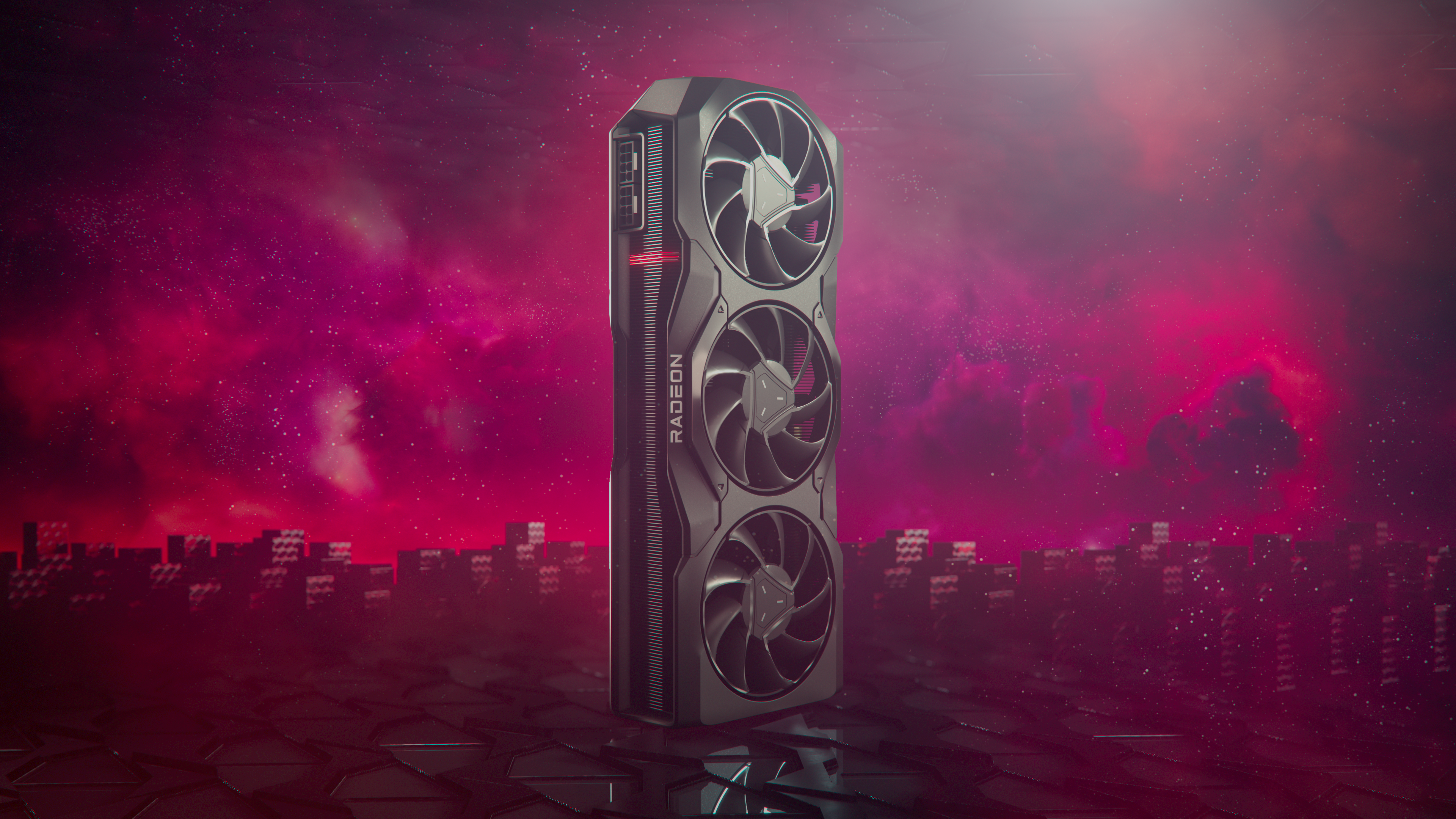
AMD has revealed its first RDNA 3 graphics cards, the $1000 Radeon RX 7900 XTX and $900 RX 7900 XT. As the numbering scheme and price points indicate, these are high-end models designed to compete with Nvidia's RTX 4090 and 4080, but they come with more substantial changes than you might expect - including FSR 3, designed to counter Nvidia's DLSS 3 frame generation, and a brand new chiplet-based design.
Before we get into the features though, let's take a look at the cards themselves. The chiplet design breaks a traditional monolithic GPU into several interconnected sections. For RDNA 3, that's a single 5nm graphics compute die (GCD) that's 300mm² and six 6nm memory cache dies (MCDs) that are each 37mm². This design means that only the most critical areas need to be made with a cutting-edge 5nm process, helping to improve CPU yields, reducing costs and ultimately consumer prices. However, it also requires a fast interconnect between the different chips - which runs at 5.3TB/s here. This same chiplet approach worked brilliantly with Ryzen, transforming AMD from an also-run to a growing giant, so it'll be fascinating to see how it if works miracles in the GPU space too.
Each of the dies are impressive in their own right. The memory cache die uses a 64-bit memory controller and a second-gen Infinity Cache, which combine to provide 2.7 times the peak bandwidth of RDNA2 designs. Meanwhile, the graphics compute die offers unified RDNA 3 compute units with hardware for stream processing, AI acceleration and RT. The design also decouples shader and front end clocks speed, with 2.3GHz for the former and 2.5GHz for the latter, which AMD says will result in a more efficient design - with up to 25 percent power savings in terms of shaders and 15 percent higher front-end clock frequency.
